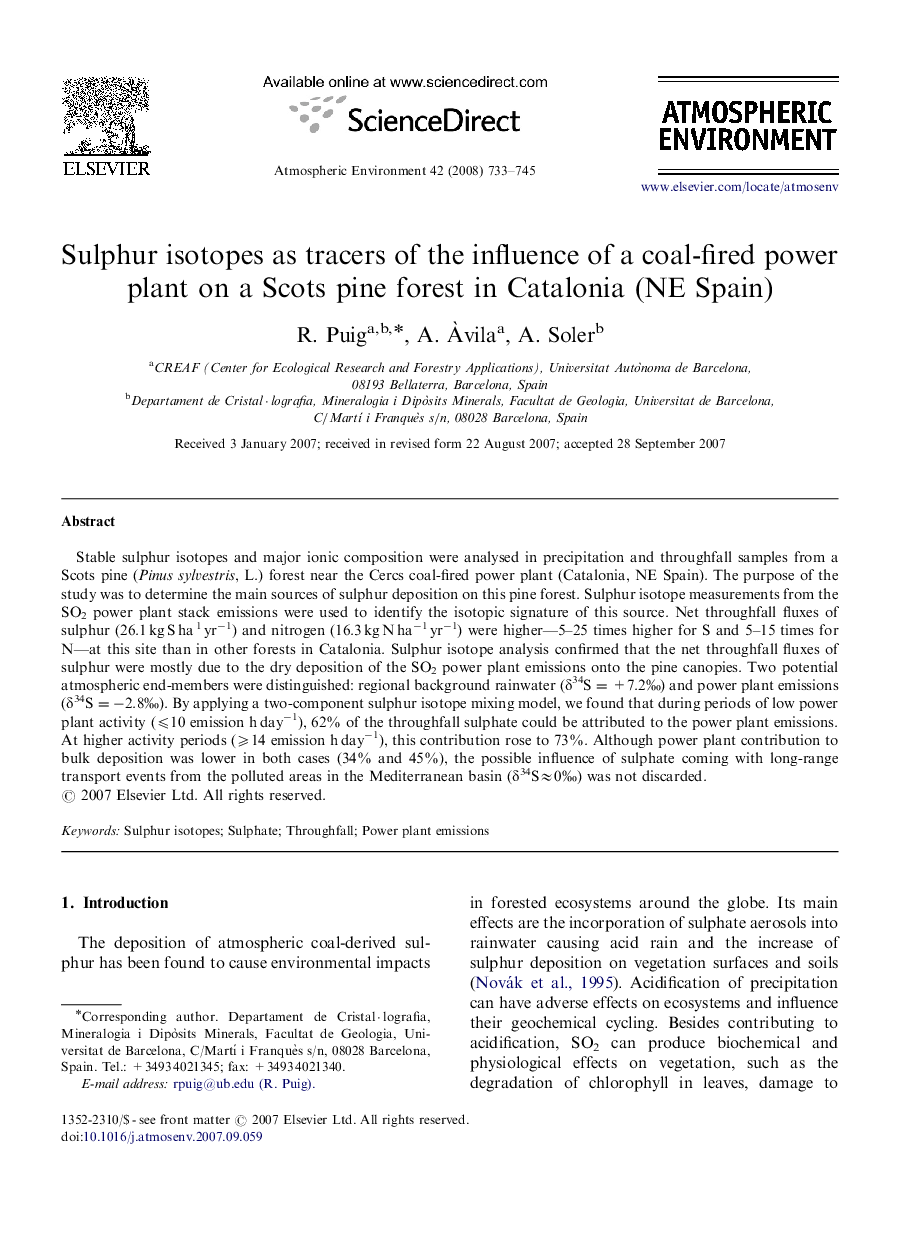| Article ID | Journal | Published Year | Pages | File Type |
|---|---|---|---|---|
| 4442621 | Atmospheric Environment | 2008 | 13 Pages |
Stable sulphur isotopes and major ionic composition were analysed in precipitation and throughfall samples from a Scots pine (Pinus sylvestris, L.) forest near the Cercs coal-fired power plant (Catalonia, NE Spain). The purpose of the study was to determine the main sources of sulphur deposition on this pine forest. Sulphur isotope measurements from the SO2 power plant stack emissions were used to identify the isotopic signature of this source. Net throughfall fluxes of sulphur (26.1 kg S ha 1 yr−1) and nitrogen (16.3 kg N ha−1 yr−1) were higher—5–25 times higher for S and 5–15 times for N—at this site than in other forests in Catalonia. Sulphur isotope analysis confirmed that the net throughfall fluxes of sulphur were mostly due to the dry deposition of the SO2 power plant emissions onto the pine canopies. Two potential atmospheric end-members were distinguished: regional background rainwater (δ34S=+7.2‰) and power plant emissions (δ34S=−2.8‰). By applying a two-component sulphur isotope mixing model, we found that during periods of low power plant activity (⩽10 emission h day−1), 62% of the throughfall sulphate could be attributed to the power plant emissions. At higher activity periods (⩾14 emission h day−1), this contribution rose to 73%. Although power plant contribution to bulk deposition was lower in both cases (34% and 45%), the possible influence of sulphate coming with long-range transport events from the polluted areas in the Mediterranean basin (δ34S≈0‰) was not discarded.
